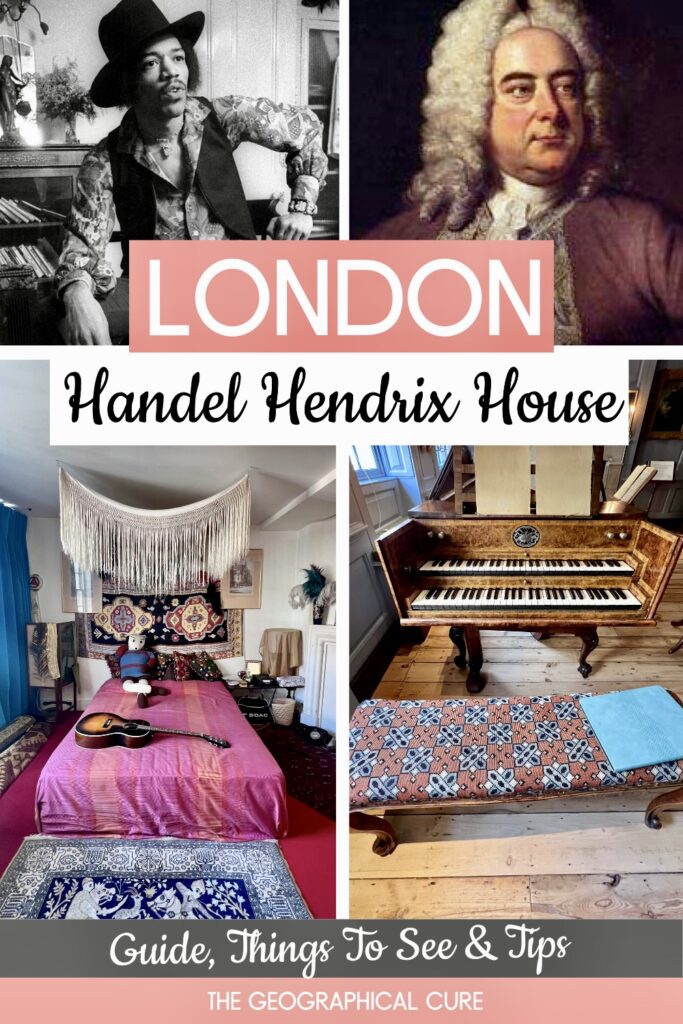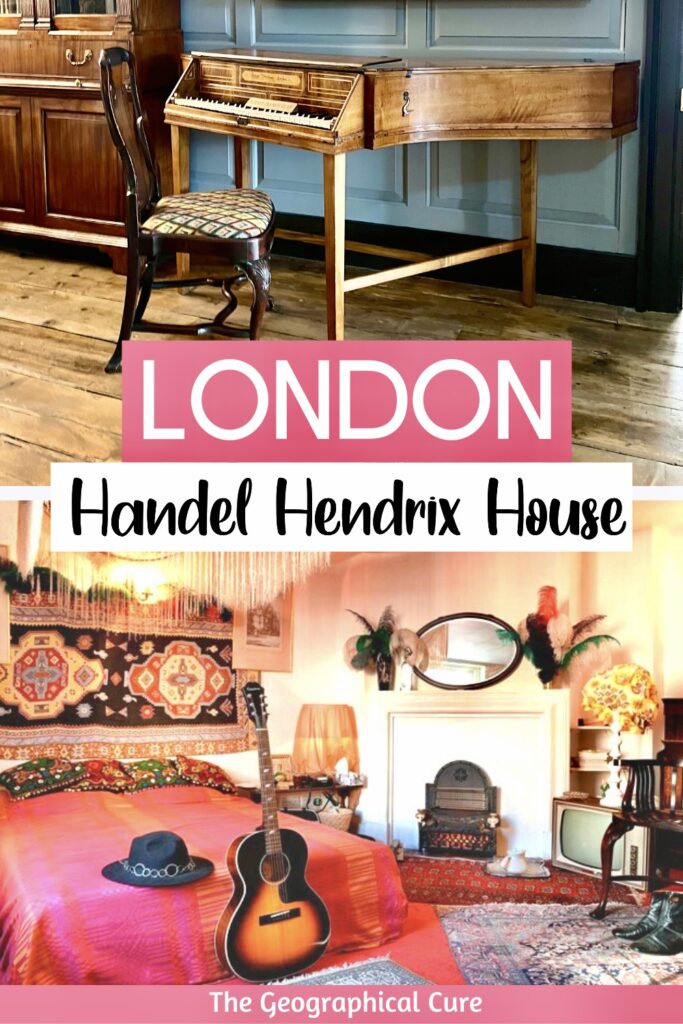The Handel-Hendrix House in London is an extremely unique museum. It’s the home and creative space of two of the greatest musicians ever to live in London … 200 years apart.
They were strange bedfellows — George Frideric Handel, the Baroque composer, and Jimi Hendrix, the rock guitar virtuoso.
Handel lived in #23 from 1723 until his death in 1759. Hendrix lived in the adjoining flat, #25, in 1968-69.
I find artist museums to be revelatory, even if all the original goodies aren’t all there. You can step back in time to a place that brings the person to life. You are there, present, imagining how these people lived.
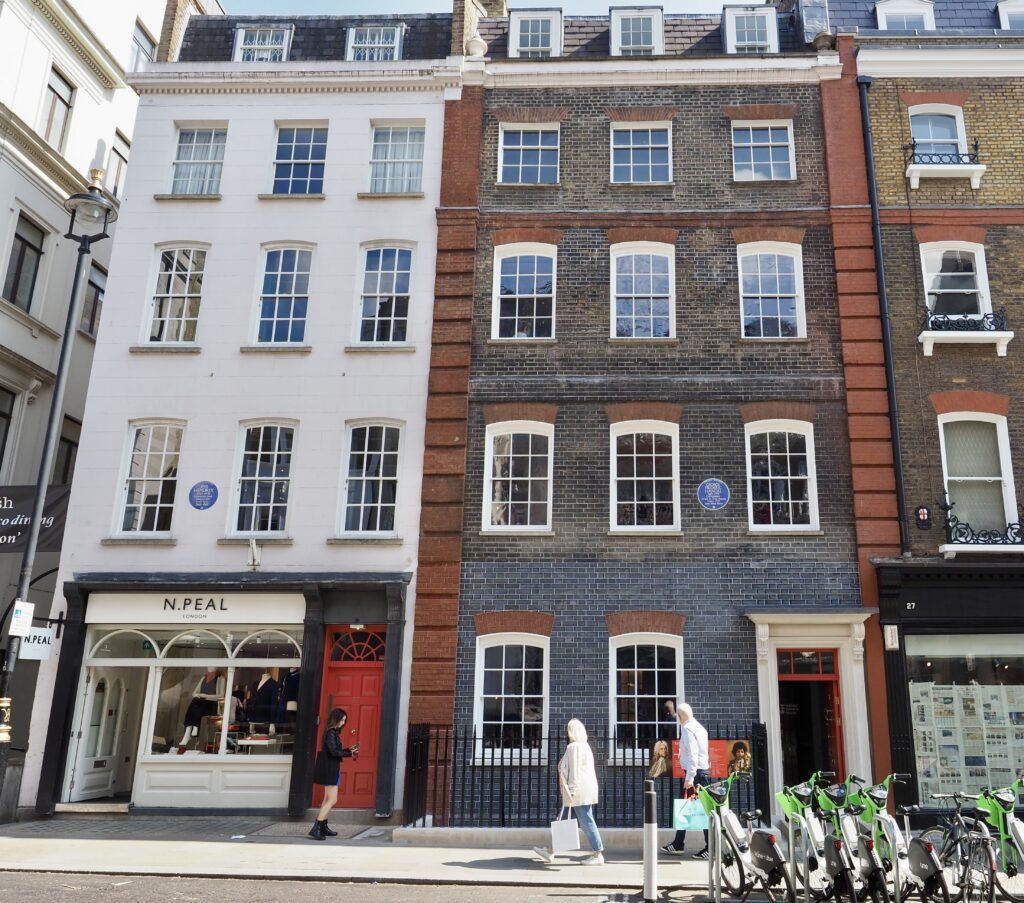
As you enter the museum, you’ll first be immersed in the world of Handel, the musical maestro of the 18th century. You can explore the very rooms where he composed some of his most famous works and gain insight into his daily life.
Then, switch gears and step into the swinging ’60s in Hendrix apartment from 1968. This apartment was “the first real home of his own.”
The museum is a quirky opportunity to see how two musical giants, from entirely different eras, found inspiration within the same historic walls.
Though they had radically different styles, they had much in common — location, international identities, a passion for music, ability to improvise, and fame in the center of London. Both musicians changed the course of history.
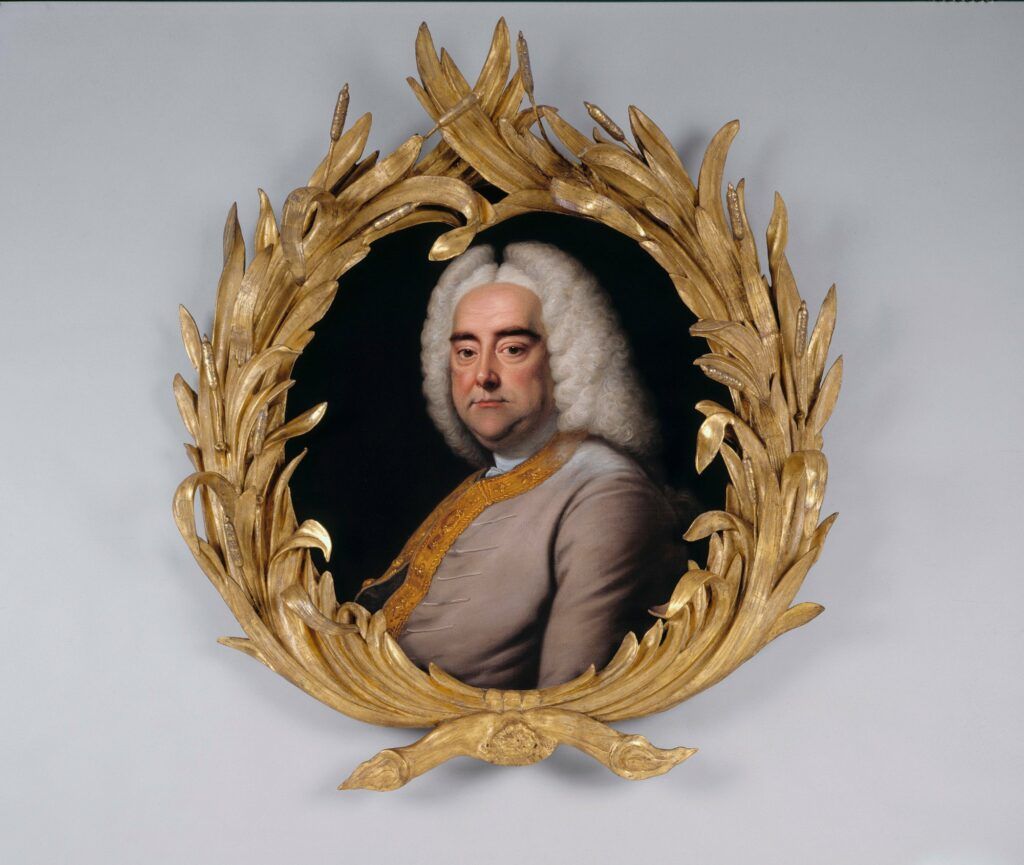
In this guide, I tell you everything to see at the Handel Hendrix House and give you must know tips for visiting. You’ll find it’s just packed with music and memorabilia.
The museum just reopened in May 2023 after a 3 million pound 2 year renovation. I just visited in October and really enjoyed the space.
Guide To The Handel Hendrix House: What To See
Here’s what you can see on a visit to the Handel Hendrix House. You’ll begin in Handel’s apartment.
There are knowledgable guides in every room if you have any questions. In each flat, there’s a dedicated space where you can listen to the tunes of the two musicians.
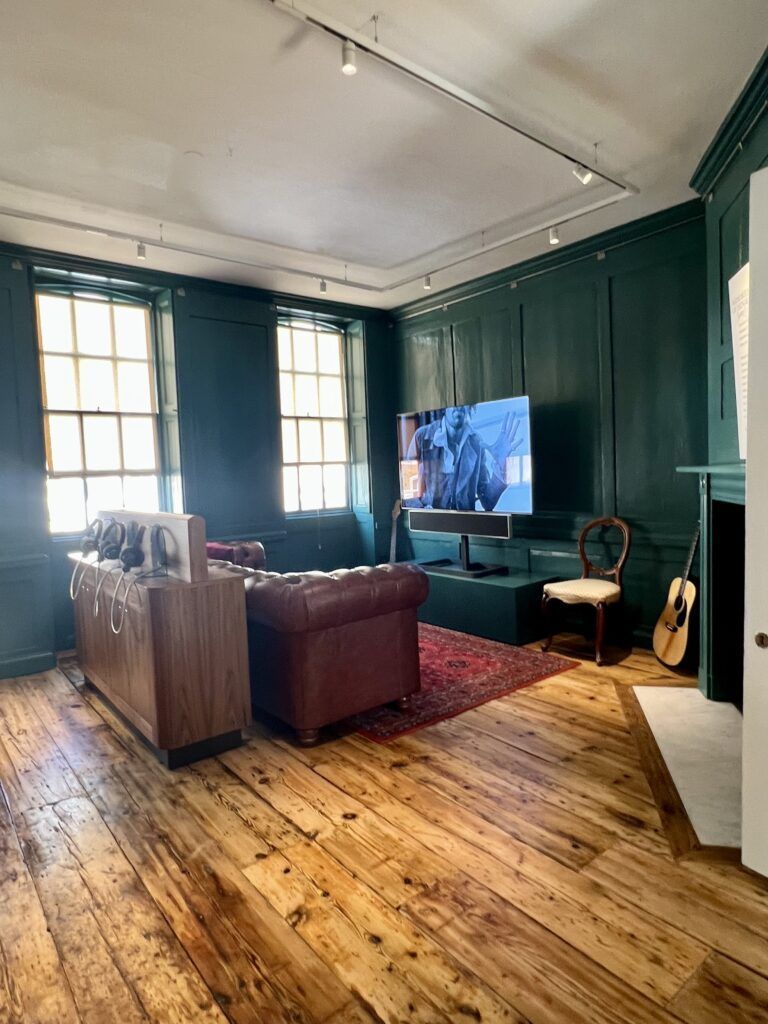
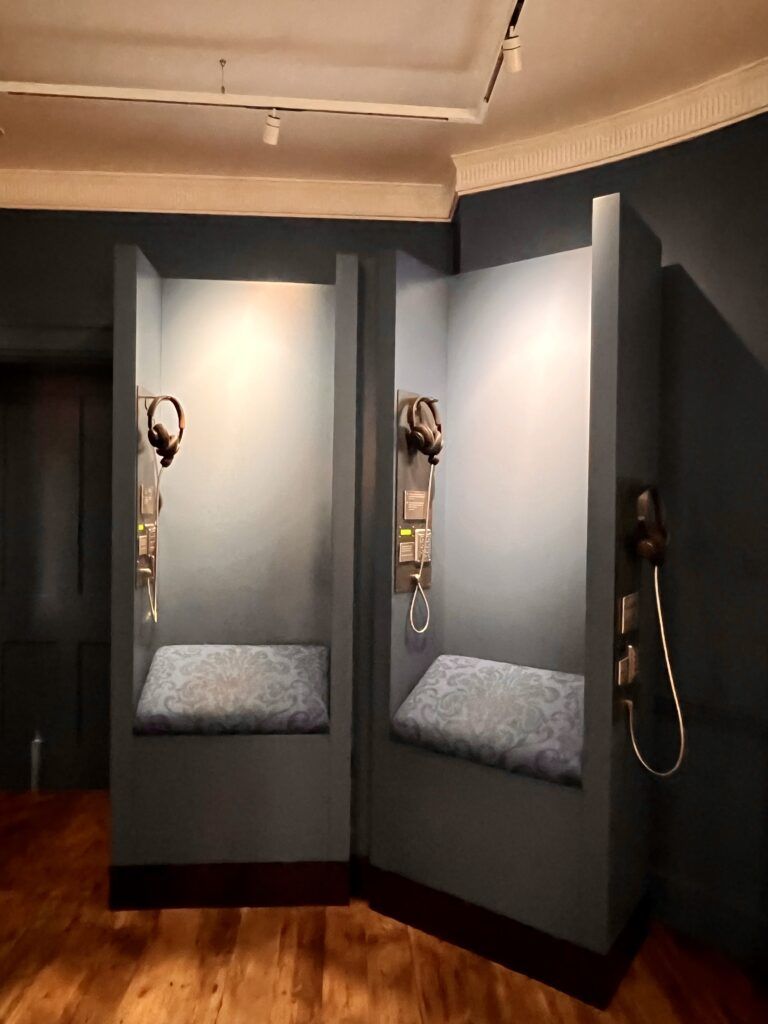
Handel’s Apartment
Meet Handel
Born in Germany, Handel first came to London in 1710. He became famous for his operas, instrumental music, oratorios, and cantatas of the Baroque era. Handel’s music is characterized by melodic richness, intricate counterpoint, and dramatic flair.
Handel had both royal and aristocratic patronage. A wave of great opera flowed from his pen, sung by the greatest voices of the age.
In 1723, the 38 year old Handel moved into a newly built house on Brooke Street that would be his residence until his death. It was his workplace, a rehearsal space, a venue for intimate musical performances, and a place of food and entertainment.
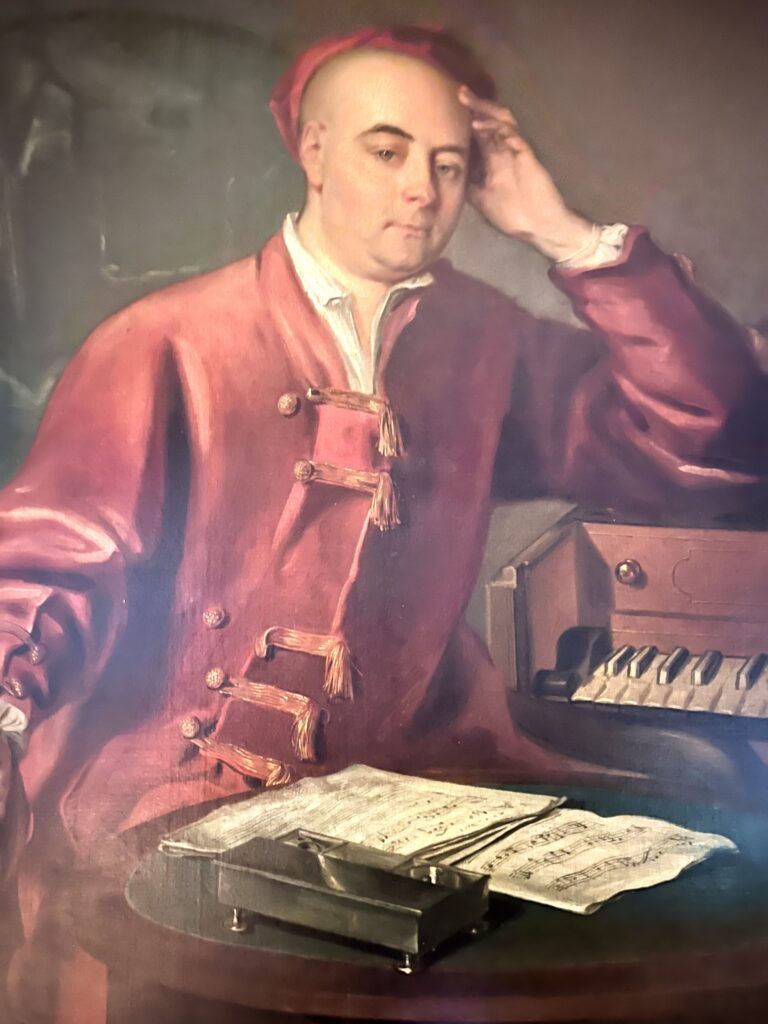
This was where Handel composed his famous Messiah, a masterpiece of choral composition and storytelling.
Not much is known about Handel personally. He was a private man and never married. There is scant evidence of romantic liaisons.
Handel was of large stature and nicknamed “the Great Bear.”
He was also well known for his unwavering work ethic and his appetite for food and wine. He could be hot tempered and demanding in his expectations of musicians and performers.
Handel was in great health for his first 52 years. But, after that, he succumbed to a number of ailments, including gout, rheumatism, palsy, localized paralysis from a stroke, and ultimately blindness. He died at age 74 in 1759 and was buried in Westminster Abbey.
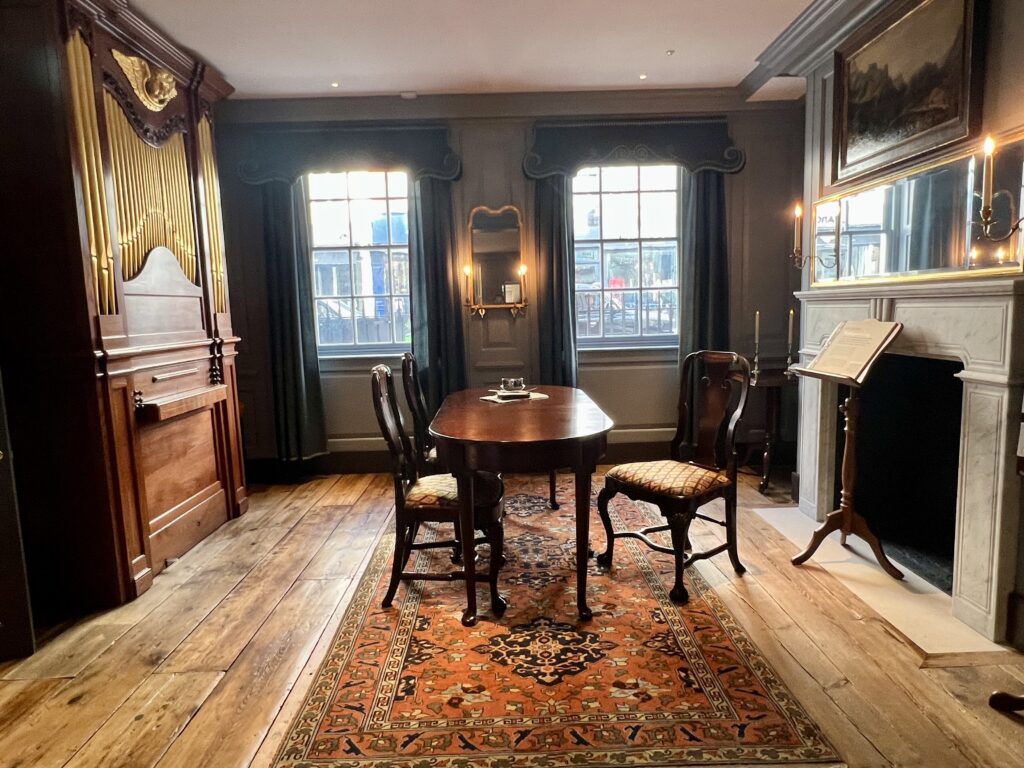
Handel’s House
Handel’s apartments span four floors. In each room, you’ll find a music stand with details about the room’s use and what it contained.
These historic rooms have been meticulously reconstructed using an inventory from Handel’s time. They appear as they would have looked in the 1740s.
At the time of his passing, there were over 100 recorded paintings, so the walls would have been adorned with art. While the exact paintings are not in the museum, you can see works by artists whom Handel greatly admired on display.
Here’s what you can see:
Fore Parlour
This room functioned almost like a shop window. It had to be impressive because it was here that Handel met patrons and subscribers, transacted business, and sold concert tickets.
The front parlour was also a waiting room for those invited upstairs for rehearsal. An organ has been installed there, based on the chamber organs of Richard Bridge and Thomas Parker.
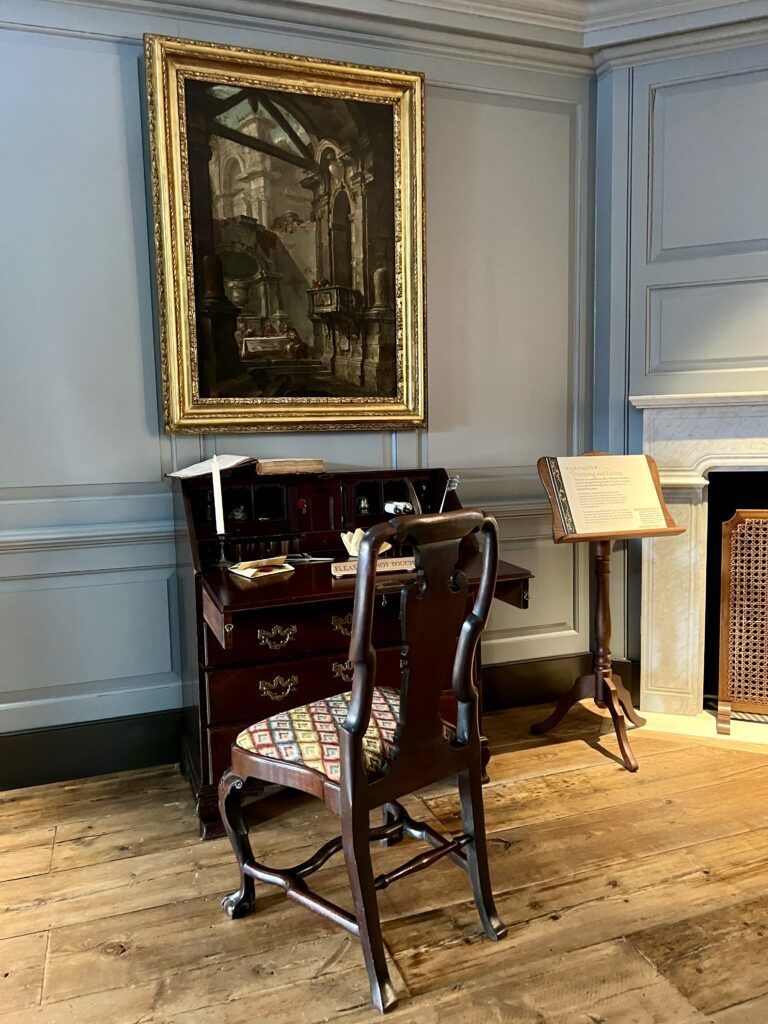
Back Parlour
Today, this room is the museum’s reception room, the first space you’ll see after entering the front door.
In Handel’s time, the Back Parlour was likely a office for Hanel’s copyist and assistant. When he was older, Handel may have been used it as a living and sleeping space.
The furnishing include a bookcase that was originally in Handel’s house. The volumes on the shelves contain Handel’s musical scores and a collection of French music.
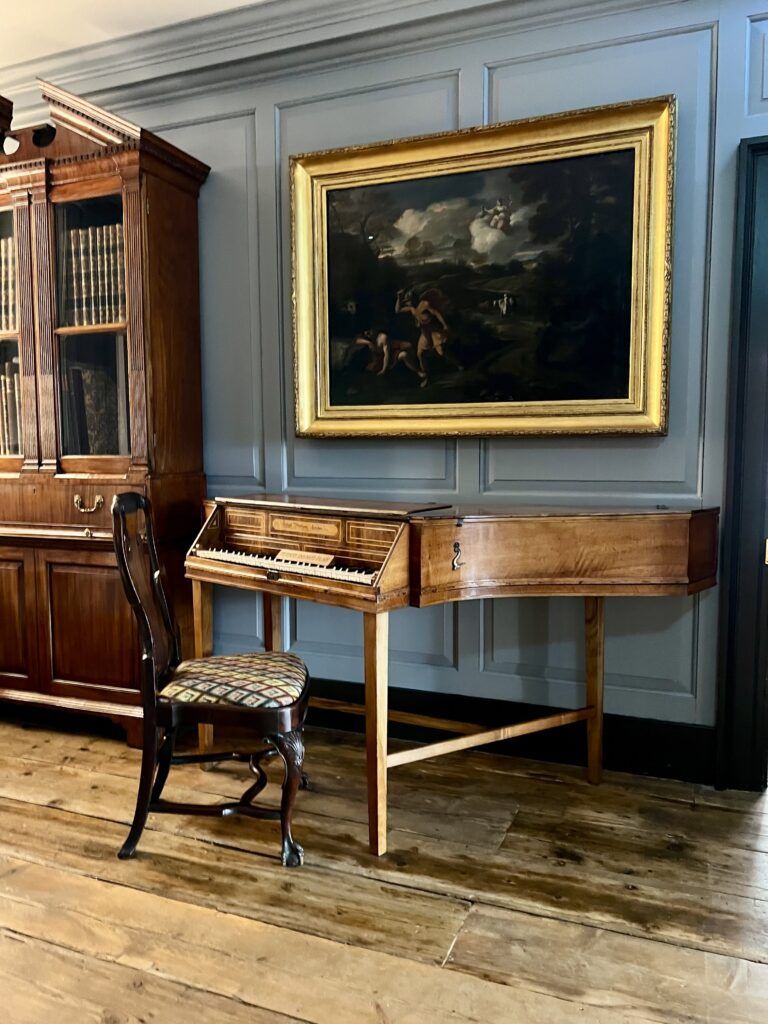
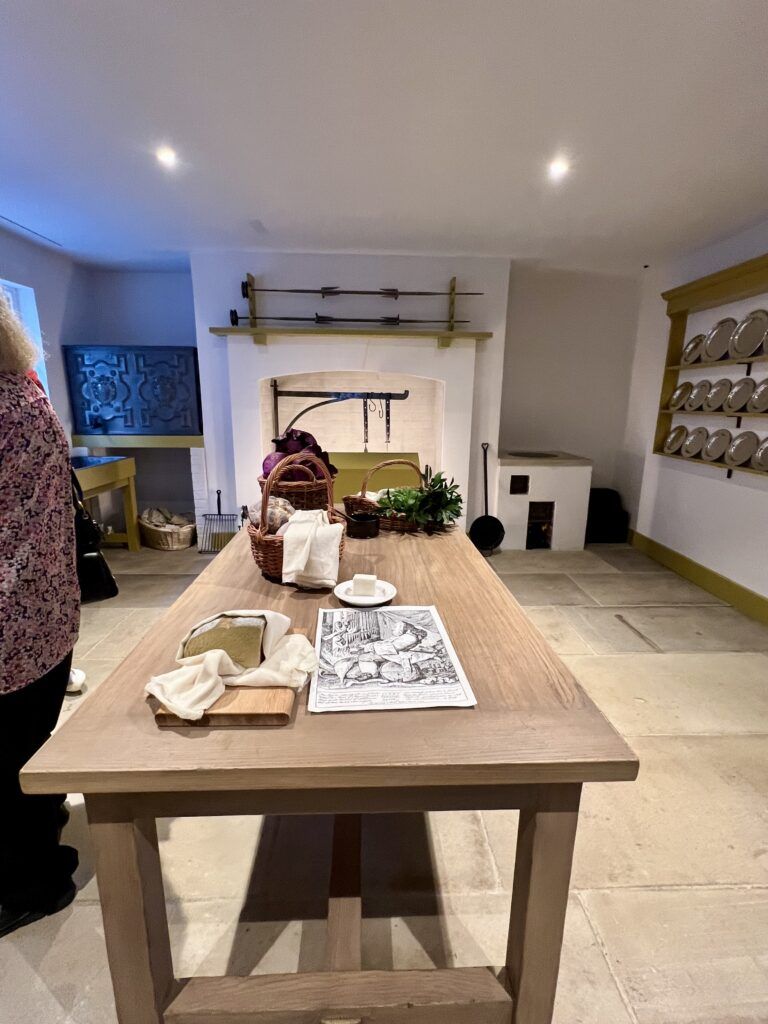
Kitchen
Next, you head down to the kitchen. It’s a re-creation of an 18th century Georgian kitchen. Handel was serious about his food, but he wasn’t often in the kitchen itself.
The means of cooking were braising, boiling, and stewing. One specialty was lambs ears (which sounds so unappealing!). There were no ovens, which suggests that baked good were brought in.
The pots, pans, and pewter plates were re-made using 18th century techniques. Dozens of cooking utensils and place settings have been tracked down based on the inventories.
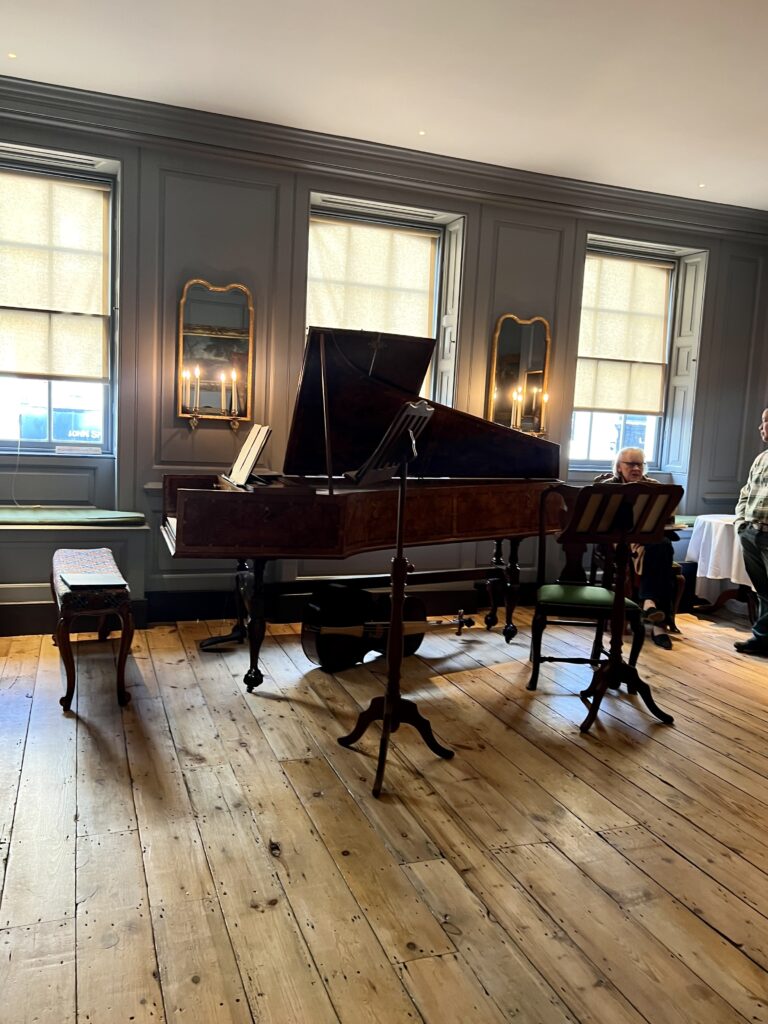
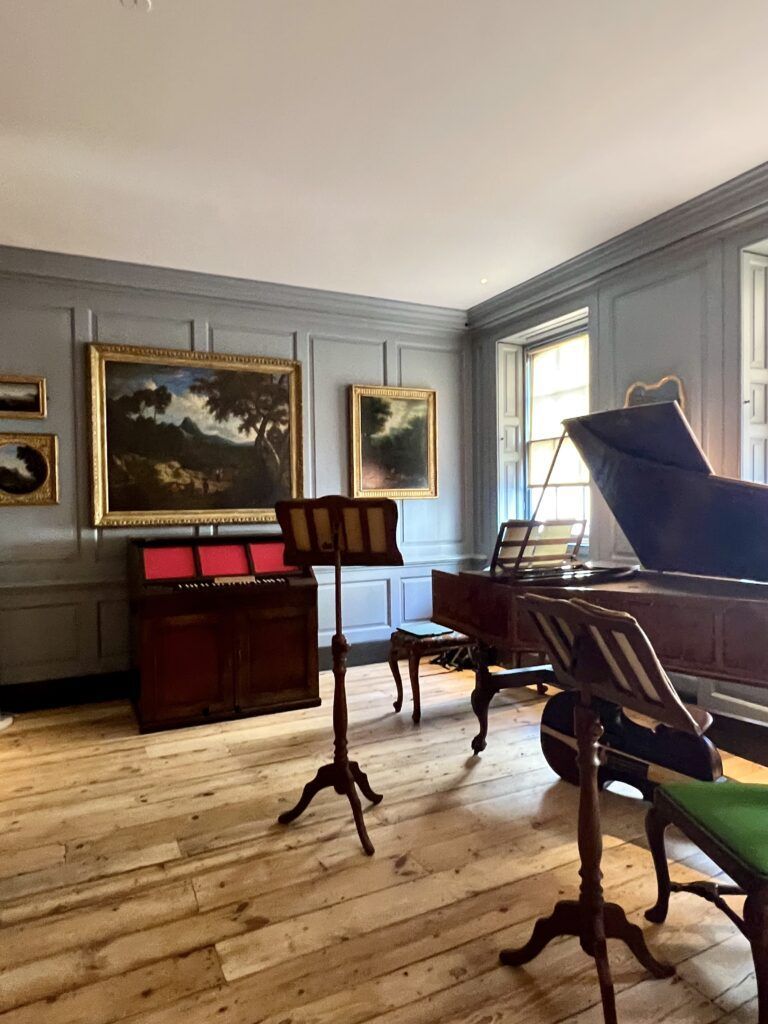
Dining Room
From the kitchen, you access the main staircase up to the dining room. This was the most important room in the house.
It doesn’t look like a dining room today. Instead, it’s filled with musical instruments associated with Handel’s compositions — a spinet, cello, and harpsichord of the type he may have played.
Handel also used the room as a space for rehearsal and performance.
By day, Handel and his musicians would practice. By night, Handel hosted friends and patrons with dining and musical entertainment, often previewing new works.
The room has a revolving display of Handel’s artworks. The most famous is a large canvas by the Venetian artist Canaletto.
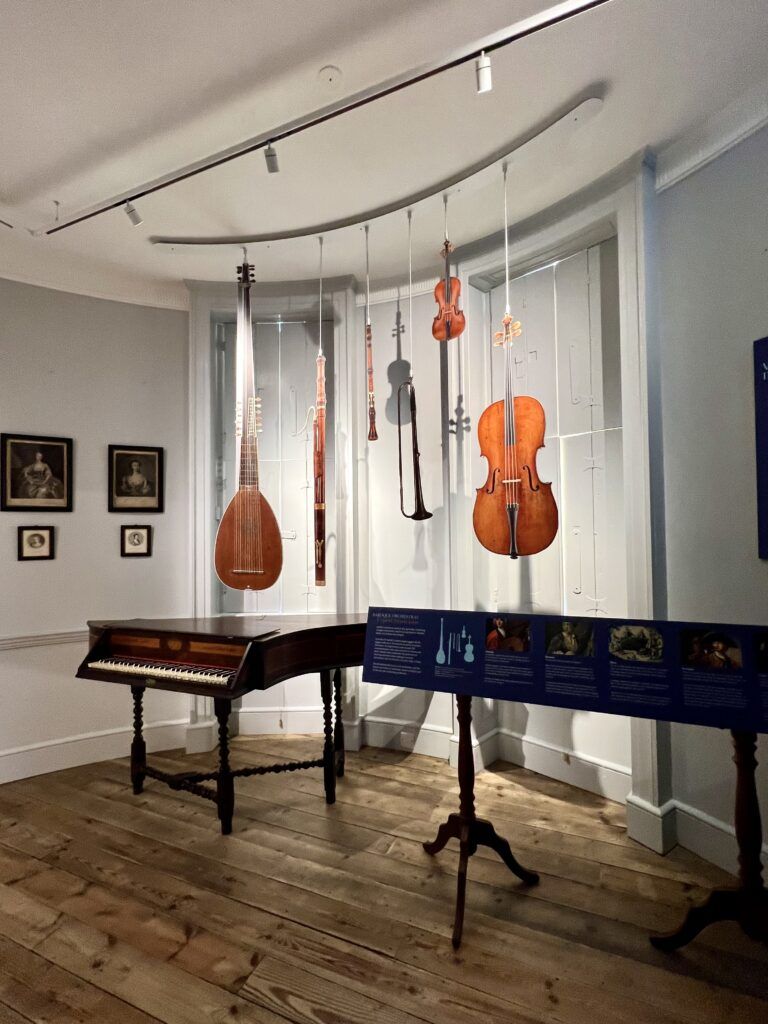
Drawing Room
This room is just behind the Dining Room. It was Handel’s workspace and private office. Most of his famous works were composed in this very room.
In a career spanning six decades, Handel was incredibly prolific. He wrote 42 operas, 29 oratorios, 16 organ concerti, and more than 120 cantatas, trios, and duets.
Handel wrote the Messiah here, in just 3-4 weeks. And you can learn about that in an immersive Messiah experience in the Drawing Room.
Sometimes, Handel wrote with such intensity that many of his papers show signs of eating and drinking while composing. There are even notations to purchase more wine!
The royal family also commissioned music from Handel for occasions like birthdays, weddings, battle victories, and coronations. For example, Handel composed the Water Music in the summer of 1717 for King George I.
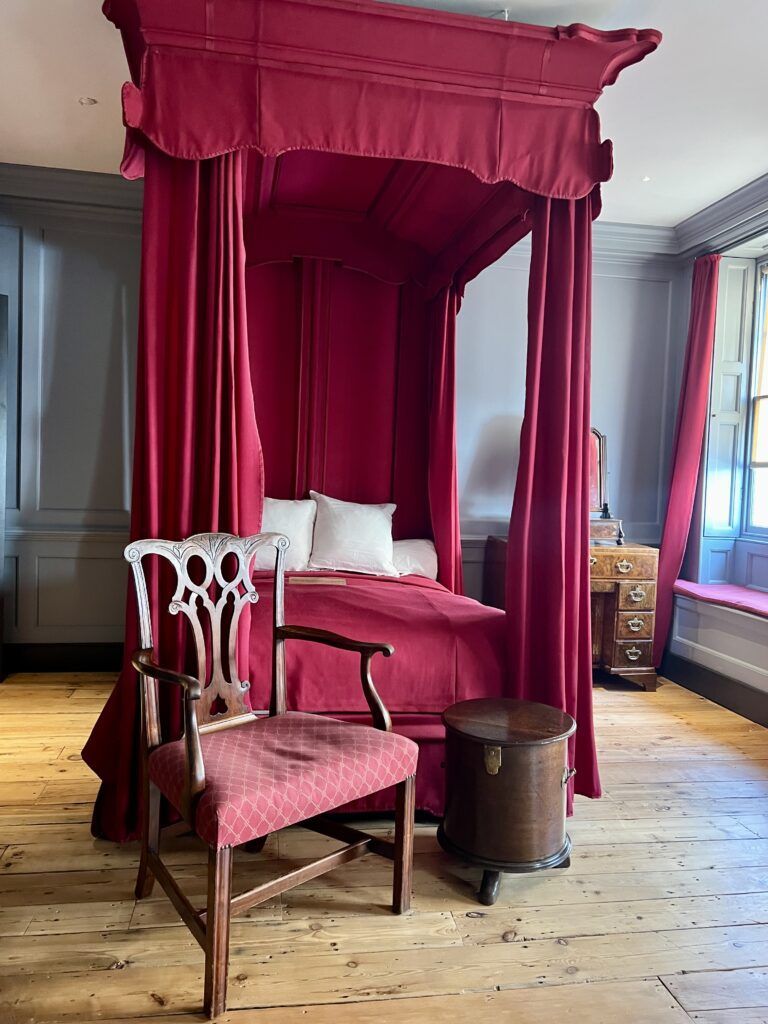
Bedroom
This was Handel’s private bedroom. Unlike the rest of the sometimes chaotic house, it was a place of tranquility.
The rest of the house was decorated to impress. But here Handel could express himself.
The room has oak furniture and a full canopied bed with drapes in crimson harateen edged in silk braid. A chamber pot stands in one corner and the room was once decorated with religious art.
Next door is the dressing room, where Handel kept his clothing, white wig, and a washstand.
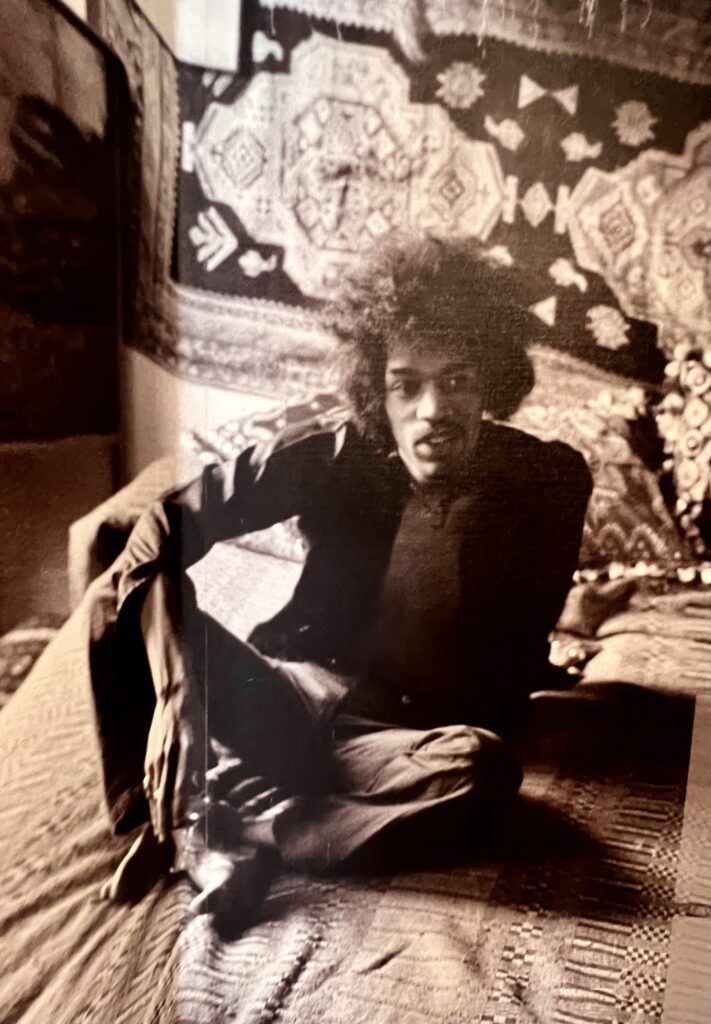
Hendrix Flat
Meet Jimi Hendrix
Born in Seattle, Hendrix first came to London in 1966. With his good looks, fashion leadership, and above all his inspired guitar playing, Hendrix was an icon of his age.
Hendrix was of mixed race parentage and didn’t have the best childhood. He lived with his aunt and grandmother due to family issues, like his father’s strict discipline and his mother’s alcoholism.
He escaped through his music and was eventually persuaded to move to London.
Once there, he met Kathy Etchingham, who would be in his life for the next three years. She was a stabilizing influence, though she hated the growing drug culture around him.
In 1968, Hendrix and Kathy moved into the upper flat, a bedsit, at #23 Brook Street. Hendrix appreciated living in the same space as Handel. In fact, he bought all the recordings of Handel’s music he could find.
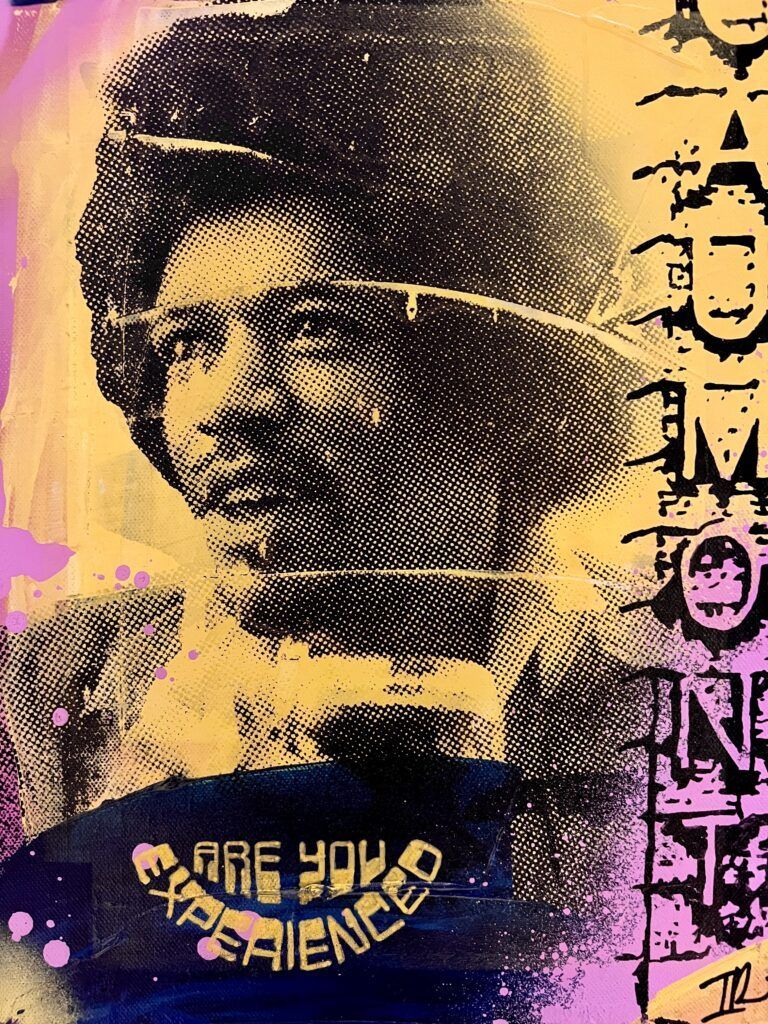
Decorated with loving care in a hippie chic style, the apartment was a place where he felt “truly at home.” By 1969, Hendrix was famous and fans often crowded the street.
The flat became a rehearsal room, music salon, and a composition space. Like Handel, Hendrix was a workaholic who played live music every night in the city’s clubs or at home.
In 1969, the couple broke up and vacated their flat. Thereafter, Hendrix stayed in hotels until his death in 1970 at only age 27 of an accidental overdose of barbiturate drugs.
At the time, he was widely regarded as one of the greatest and most innovative guitarists of all time.
Today, this is the only Hendrix home in the world that is open to the public.
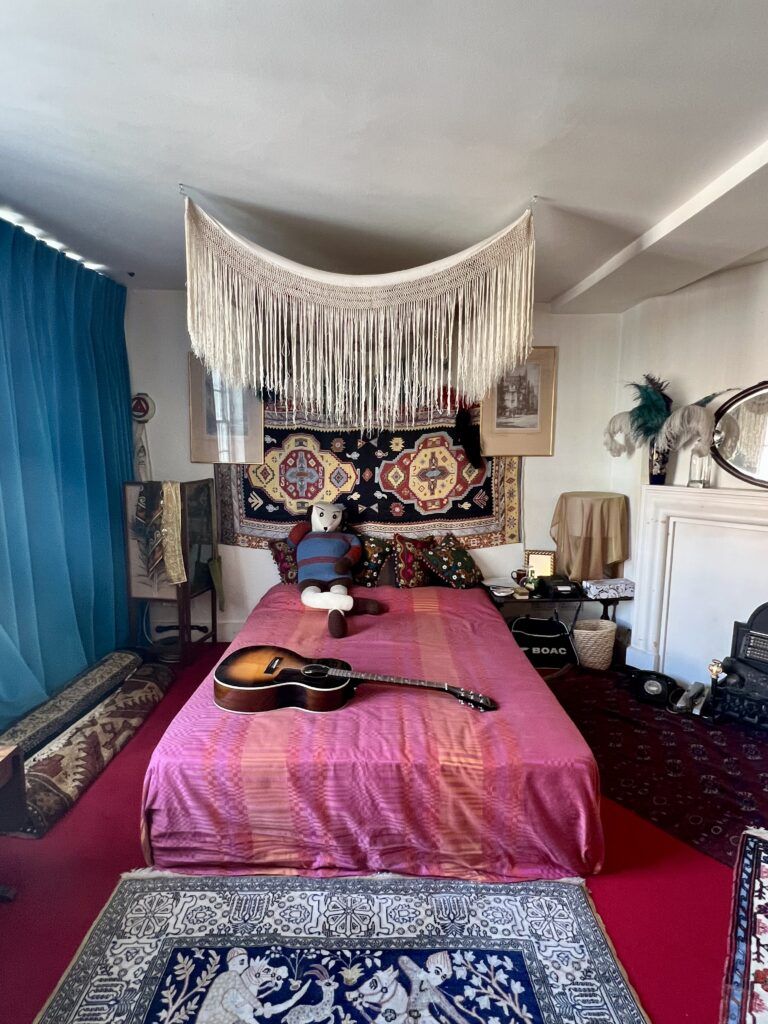
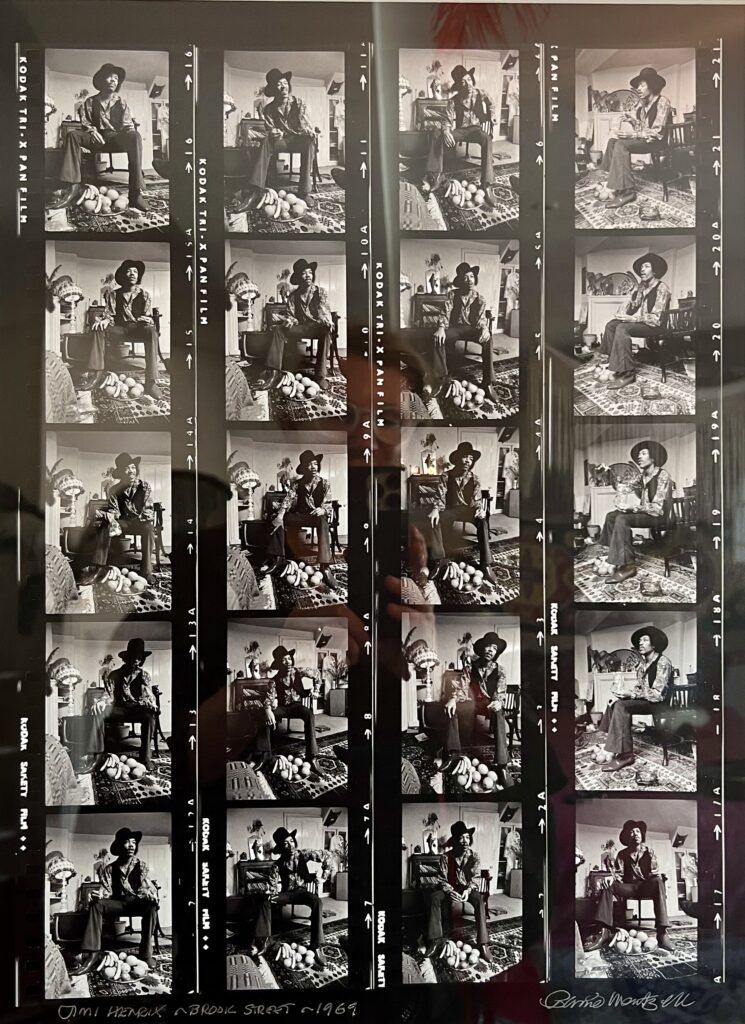
Hendrix’ Flat
Hendrix’ flat is a much smaller space than Handel’s.
It was recreated based on photographs taken when Hendrix and Etchingham lived there. Etchingham was also a consultant on the renovation project.
The flat was where Hendrix lived, wrote, played, and entertained his friends during a particularly prolific period of his career.
The centerpiece of the flat was a colorful living room and bedroom. The items in it were either recreated from scratch or sourced from vintage shops. The oval mirror above the fireplace, however, is original.
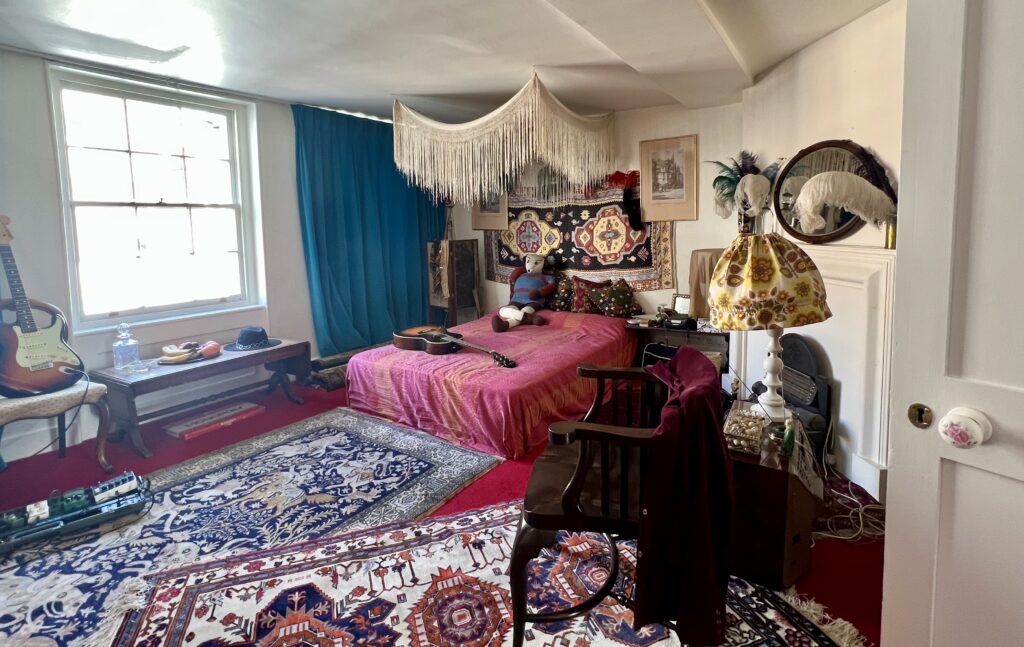
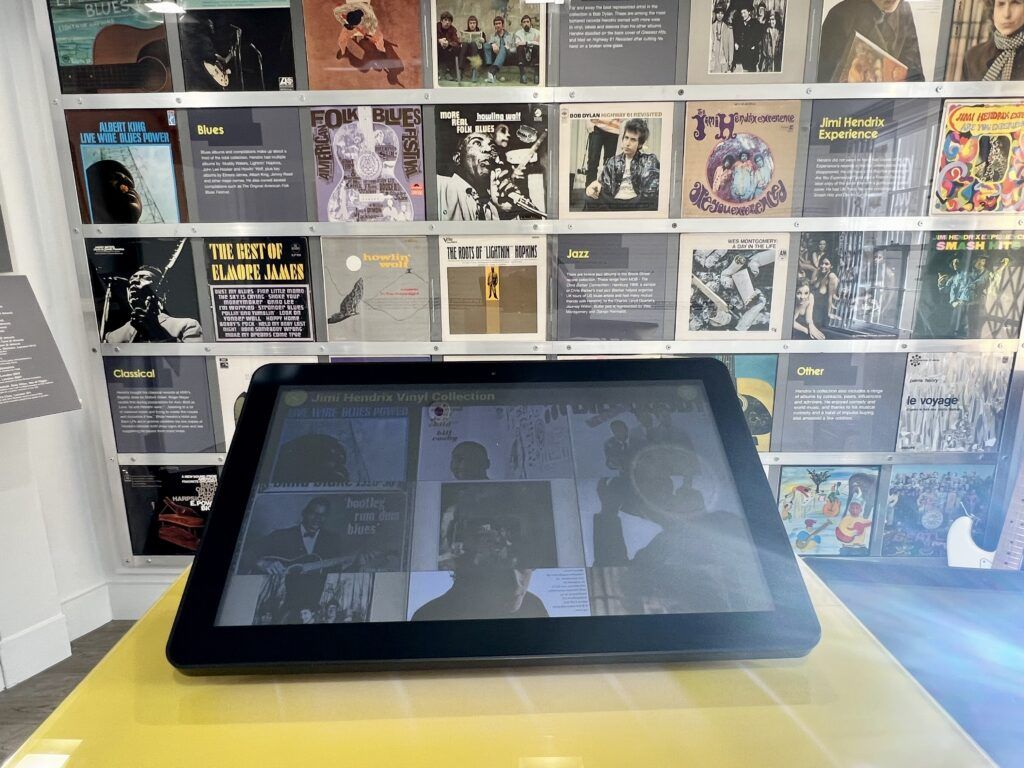
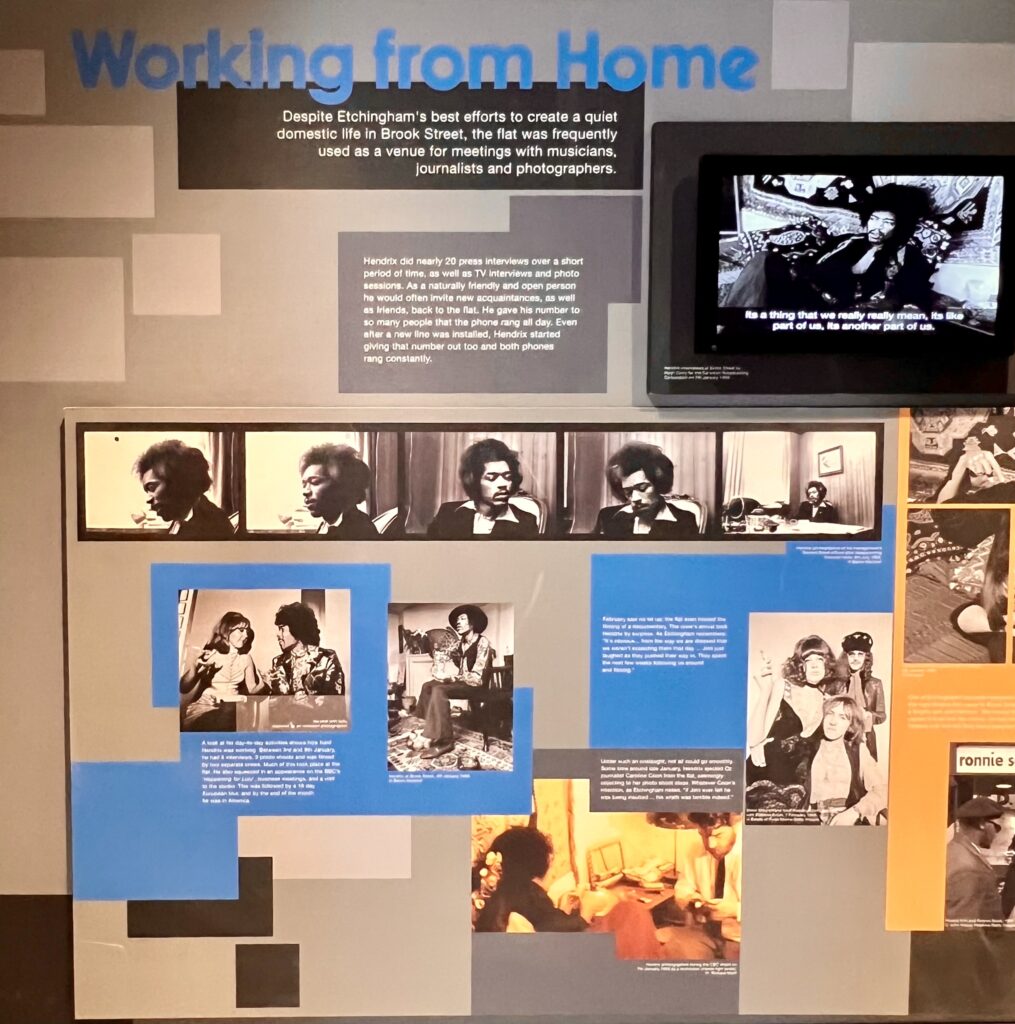
To decorate, Hendrix shopped at the John Lewis department store. He was into textiles and antiques.
Hendrix used a Victorian shawl as a bed canopy, stacked Persian rugs on the floor, and adorned the fireplace mantel with ostrich feathers.
There were turquoise velvet curtains and a pink and orange bedspread, all giving it a bohemian and sensory vibe. Hendrix even kept a large stuffed animal named “Dogbear.”
Next to the bedroom is a little room where the couple kept their clothes with a couch.
The exhibit include a collection of artifacts and memorabilia associated with Jimi Hendrix. There’s a room with wall-to-wall album covers of Hendrix’s record collection.
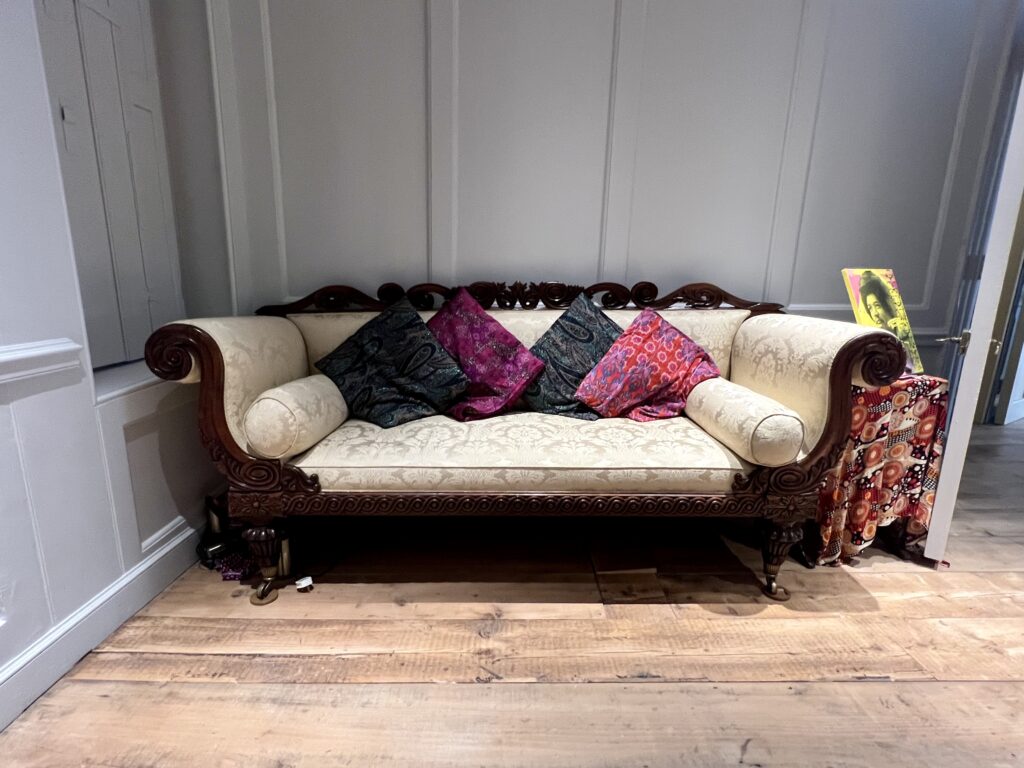
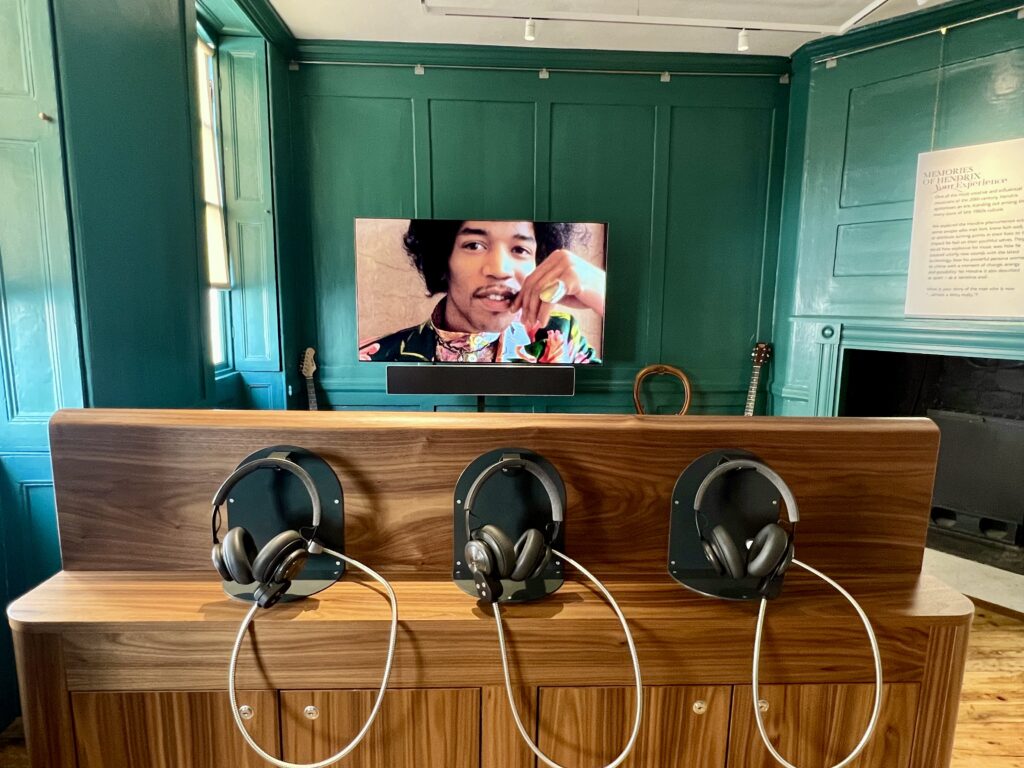
By 1969, he owned over 100 albums. Spindle and label wear reveals that he listened frequently to Bob Dylan, Handel’s Messiah, and blues.
There is also a central foyer (once part of Handel’s attic) with explanatory texts and photographs, autograph song lyrics, videos, film clips, and an Epiphone acoustic guitar, formally owned by Hendrix.
You’ll learn that the couple enjoyed leisurely afternoons at their flat, playing board games like Monopoly, listening to records, and watching episodes of the television series Coronation Street.
There were no wild parties. But musicians would gather at night and play and jam. An outdoor balcony served as the flat’s bar. When it came to visit, they ordered out from Mr. Love, the restaurant on the ground floor.
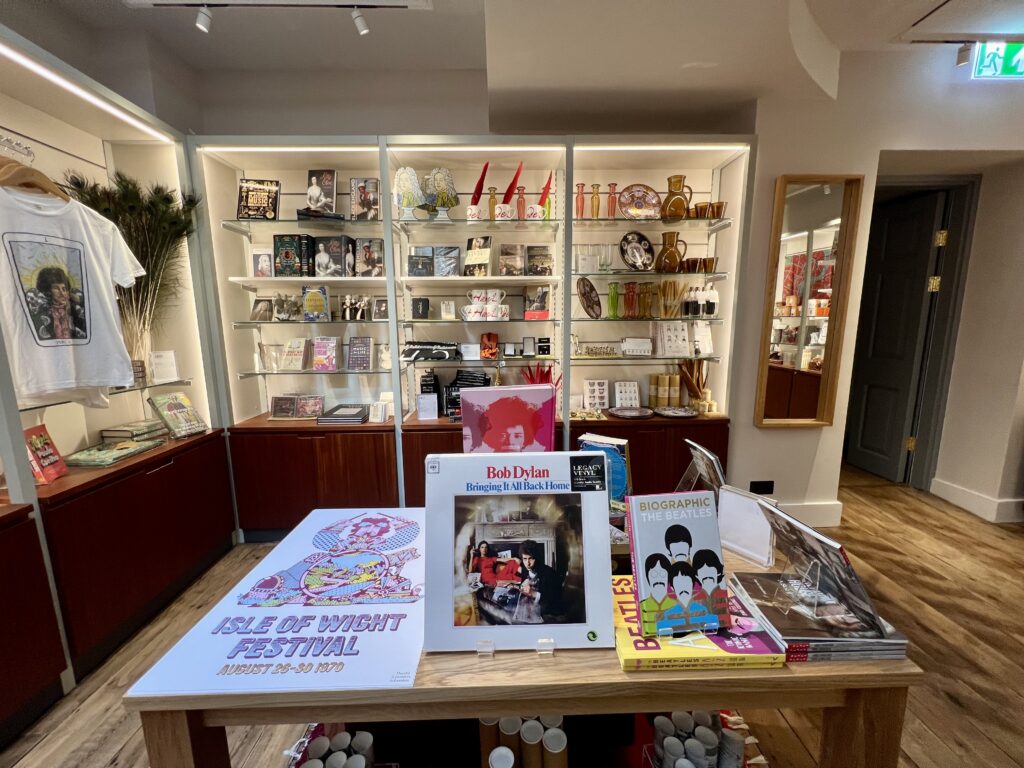
Practical Guide & Tips For The Handel Hendrix House
Address: 23-25 Brook Street, Mayfair, London
Hours: Wednesday through Sunday from 10:00 am to 5:00 pm. Closed Monday and Tuesday.
Tickets: 14 euros for adults, 10 euros for students, and under 16 free. Audio guide is included. One ticket covers both houses. The museum is also included in the London Pass.
Pro Tips: Plan to spend 1-2 hours on a visit, depending on how much music you listen to. There are also special events on these days:
- Wednesdays: Talk, 11:00 am
- Fridays: Live guitar rehearsal, 11:00 am to 1:00pm
- Saturdays: Family activities and Baroque rehearsals, 10:00 to 12:00 pm & 1:00 pm to 3:00 pm
- Sundays: Family activities and live Baroque rehearsal, 1:00 to 3:00 pm
Live music is part of the museum experience. You may hear a professional musician playing the harpsichord in the Handel apartment or guitarists in the Hendrix flat.
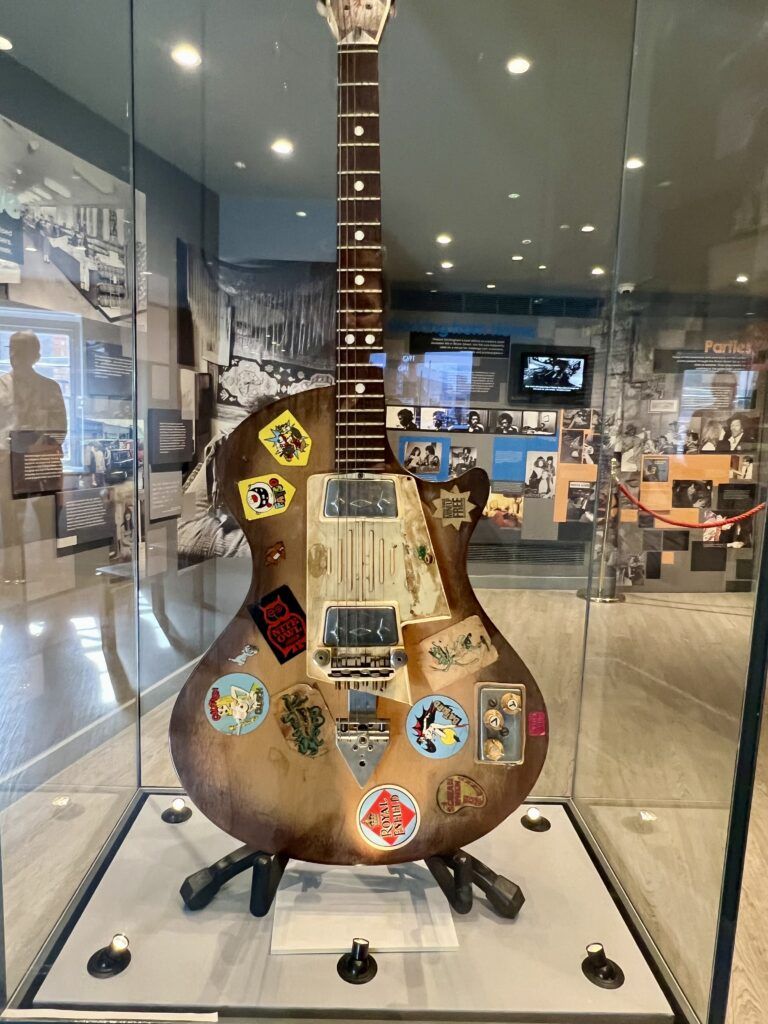
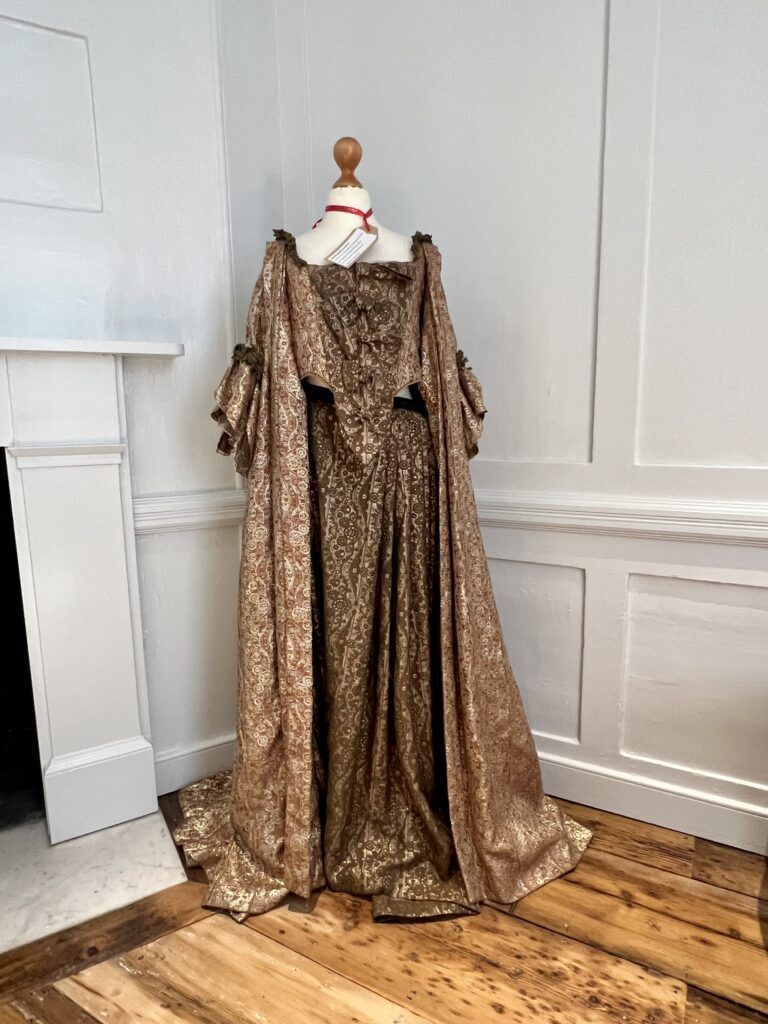
Keep an eye on the museum’s calendar for special events, exhibitions, and musical performances that celebrate the legacy of Handel and Hendrix.
Is Handel Hendrix Worth Visiting?
It definitely was for me, though I concede there are not a lot of original furnishings. Still, you are walking in the footsteps of these musicians. The double museum is educational and well curated, you can listen to music, and there is often live music.
I hope you’ve enjoyed my guide to the Handel Hendrix House. You may find these other London travel guides useful:
- 3 Day Itinerary for London
- 5 Day Itinerary for London
- Hidden Gems in London
- Tourist Traps To Avoid in London
- Best Museums in London
- Day Trips from London
- Harry Potter Places in London
- Guide to the Tower of London
- Guide to the Churchill War Rooms
- Guide To the National Gallery of Art
Pin it for later.

